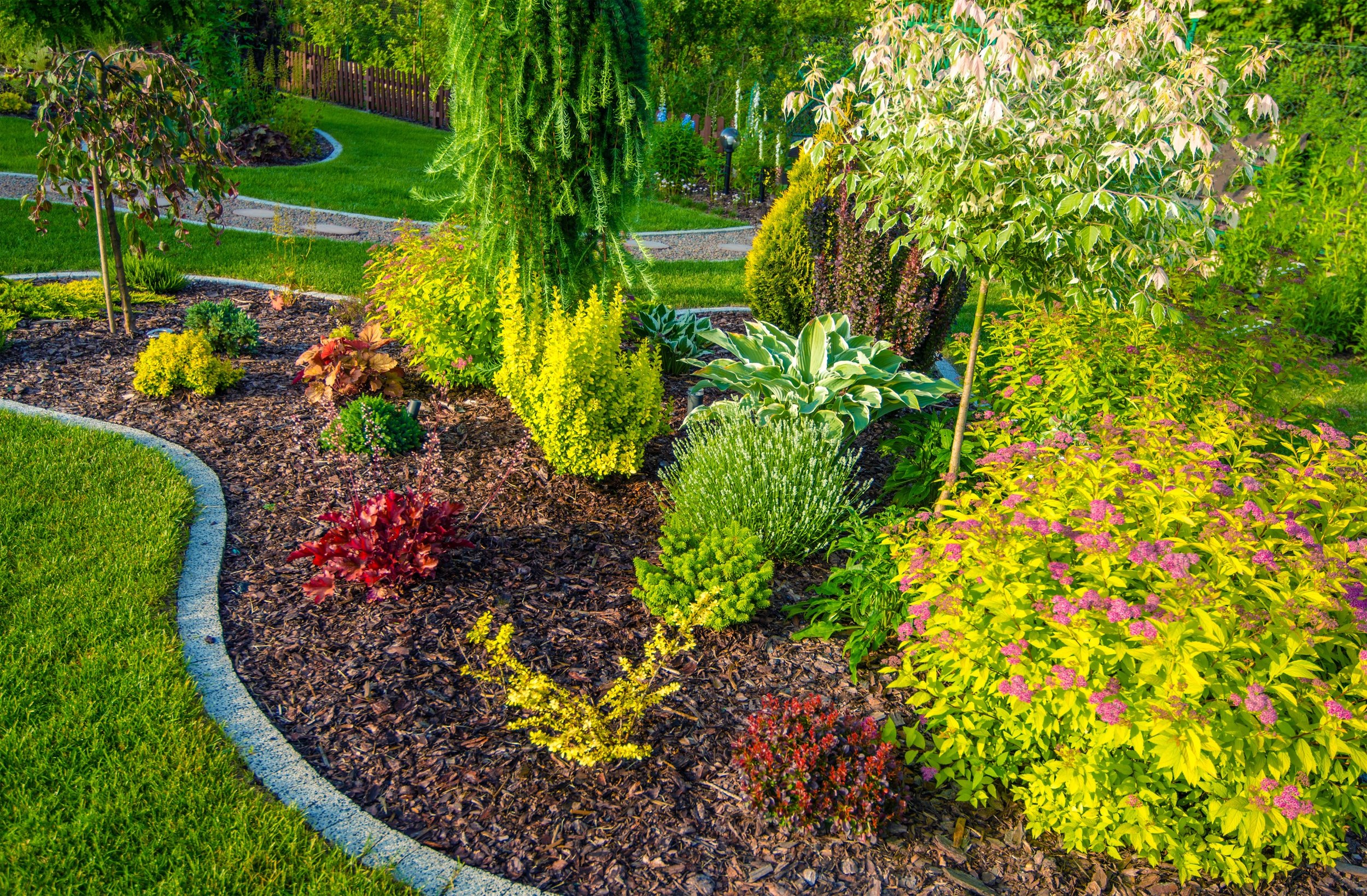Elevate Your Building's Aesthetic With Sustainable Landscaping Designs and Eco-Friendly Practices

Benefits of Lasting Landscape Design
Carrying out lasting landscaping methods not just conserves all-natural resources yet likewise advertises biodiversity and improves overall environmental wellness. By picking green landscape design strategies, residential property proprietors can enjoy a wide variety of advantages that extend beyond simply visual appeal. One considerable benefit is the decrease of water intake via using drought-resistant plants, rainfall yards, and reliable irrigation systems. This not only decreases energy expenses but additionally adds to water preservation initiatives in the neighborhood.
Additionally, lasting landscape design can improve dirt health by minimizing making use of chemical fertilizers and pesticides, thereby producing a healthier setting for plant growth and beneficial dirt organisms. This, in turn, boosts the total durability of the landscape to withstand ecological stressors and environment change effects - landscaping contractor Jacksonville. Furthermore, lasting landscaping methods can bring in diverse wild animals, including pollinators like and butterflies, fostering a much more vibrant and well balanced environment within the residential or commercial property
Incorporating Native Plants
To develop upon the advantages of lasting landscaping, a calculated focus on including indigenous plants can even more boost eco-friendly resilience and promote biodiversity within the landscape. Native plants are types that normally take place in a particular area and have actually evolved to flourish in the neighborhood climate, dirt conditions, and community. By consisting of indigenous plants in landscaping layouts, residential property owners can decrease water usage, minimize the requirement for chemical pesticides and fertilizers, and support the regional wildlife populace.
Including indigenous plants likewise assists in preserving the unique character and identity of a region's vegetation. These plants usually call for much less maintenance as soon as developed, making them a sustainable and cost-effective landscape design option in the future. Additionally, indigenous plants can draw in native pollinators like and butterflies, contributing to the general health and wellness of the environment.
When selecting native plants for landscape design jobs, it is important to select species that are appropriate to the particular ecological conditions of the website. Consulting with organic gardens or regional nurseries can give important advice on picking the appropriate indigenous plants for a certain location. By incorporating indigenous plants right into landscape design designs, property proprietors can create lovely, lasting outdoor spaces that profit both the atmosphere and the area.

Water Preservation Techniques
Reliable irrigation approaches play a crucial function in lasting landscaping techniques, guaranteeing optimal water conservation efforts in outside rooms. Leak watering delivers water straight to the origins of plants, lessening evaporation and overflow.
Along with innovative irrigation approaches, xeriscaping is one more water-saving landscaping method that concentrates on using drought-resistant plants, compost, and reliable irrigation to produce a low-water landscape layout - landscaping contractor Jacksonville. By selecting indigenous plants that are well-suited to the neighborhood climate and soil problems, homeowner can decrease the demand for excessive watering, eventually saving water and advertising a lasting outdoor atmosphere
Eco-Friendly Hardscaping Concepts
Enhancing exterior spaces with environment-friendly hardscaping features can contribute dramatically to sustainable landscape design techniques. Opt for materials like recovered timber, recycled concrete, or all-natural useful site stone to reduce environmental effect when taking into consideration hardscaping elements. These products not only include a distinct visual attract your outside room however also lower the requirement for new sources removal.
Applying permeable paving alternatives such as gravel or absorptive concrete can aid decrease water runoff and promote groundwater recharge. These options enable rain to seep into the ground, protecting against disintegration and minimizing the concern on stormwater systems.
Incorporating indigenous plants their explanation right into hardscaping layouts can better boost eco-friendliness by supporting regional wildlife and minimizing the requirement for extreme watering or chemical treatments. By including upright gardens or green wall surfaces, you can introduce much more greenery into urban setups, enhancing air high quality and biodiversity.
Incorporating energy-efficient lighting, such as solar-powered LEDs, right into hardscaping layouts can minimize power usage and reduced your building's carbon impact. Prioritizing environment-friendly hardscaping ideas not only enhances the beauty of your outdoor room however additionally demonstrates a dedication to ecological stewardship.
Maintenance Tips for Sustainable Landscapes

Frequently trim plants to promote healthy development and prevent overgrowth that can lead to pest illness or problems. Use natural plant foods to nurture the soil and plants without harmful chemicals that can seep right into the setting.
Conclusion
In verdict, sustainable landscape design practices supply many benefits for home proprietors, from enhancing the aesthetic allure of the surroundings to advertising environmental conservation. By including native plants, carrying out water conservation methods, and utilizing environment-friendly hardscaping ideas, homeowner can develop beautiful landscapes that are also eco liable. With correct upkeep, lasting landscapes can prosper and contribute to a healthier community for both humans and wild animals.
In addition, lasting landscape design can enhance soil health by minimizing the use of chemical plant foods and chemicals, therefore developing a much healthier atmosphere for plant growth and advantageous soil microorganisms.To develop upon the benefits of sustainable landscape design, a calculated focus on incorporating indigenous plants can additionally improve ecological resilience and advertise biodiversity within the landscape. By consisting of native plants in landscaping layouts, property proprietors can lower water usage, reduce the demand for chemical pesticides and plant foods, and support the local wild animals population.
These plants typically need less maintenance once established, making them a sustainable and cost-effective landscape design option in the long run. By integrating indigenous plants right into landscaping layouts, property proprietors can my website produce stunning, sustainable outdoor rooms that profit both the area and the setting.